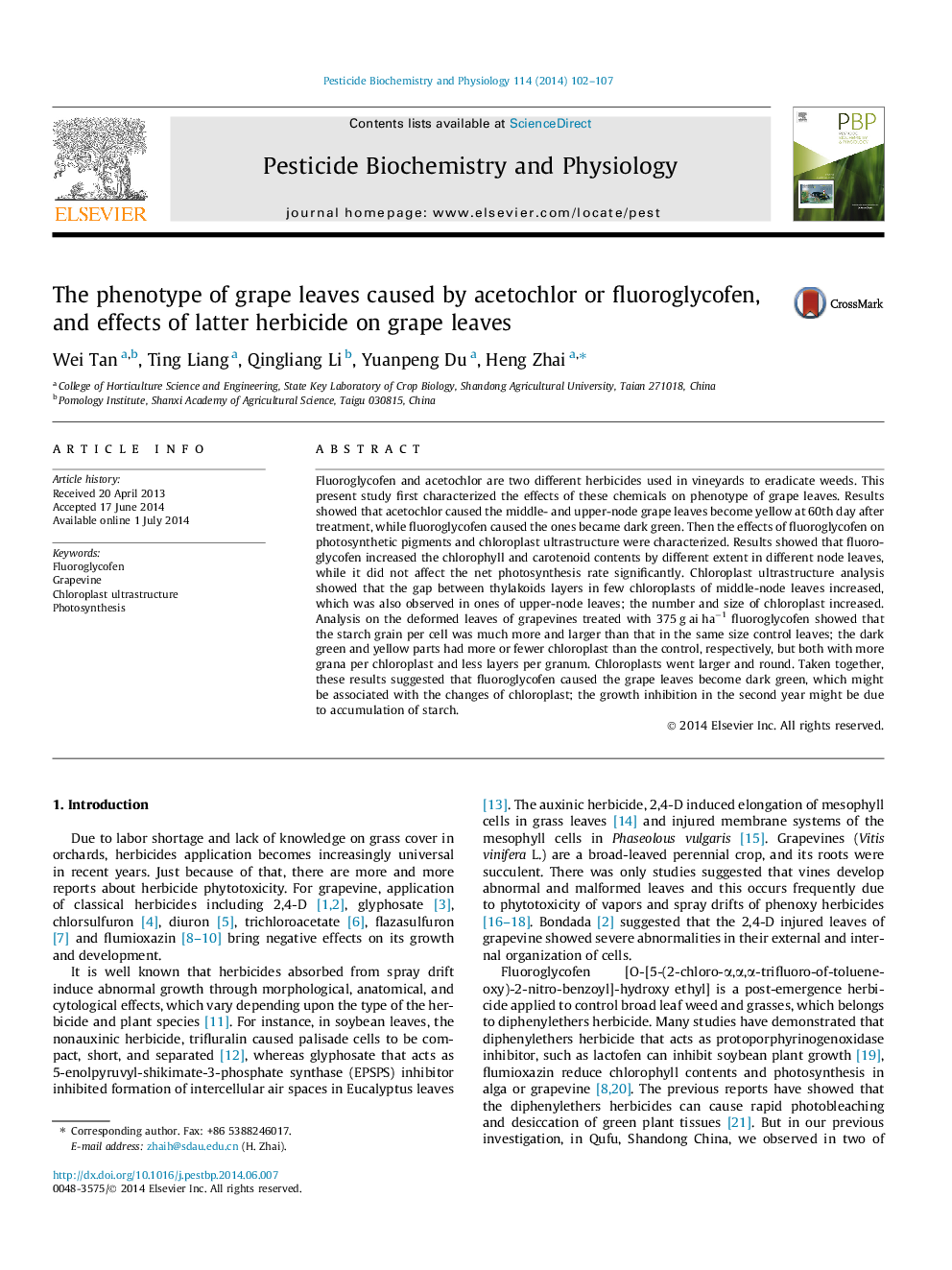| کد مقاله | کد نشریه | سال انتشار | مقاله انگلیسی | نسخه تمام متن |
|---|---|---|---|---|
| 2009248 | 1541785 | 2014 | 6 صفحه PDF | دانلود رایگان |
• Two herbicides (fluoroglycofen and acetochlor) were applied on the sand or soil.
• Application of acetochlor and fluoroglycofen caused the grape leaves become yellow and dark-green, respectively.
• Fluoroglycofen changed the ultrastructure of chloroplast in upper and middle-node grape leaves.
• Fluoroglycofen deformed the grape leaves in the second year, the chloroplast in yellow and dark-green parts was different.
Fluoroglycofen and acetochlor are two different herbicides used in vineyards to eradicate weeds. This present study first characterized the effects of these chemicals on phenotype of grape leaves. Results showed that acetochlor caused the middle- and upper-node grape leaves become yellow at 60th day after treatment, while fluoroglycofen caused the ones became dark green. Then the effects of fluoroglycofen on photosynthetic pigments and chloroplast ultrastructure were characterized. Results showed that fluoroglycofen increased the chlorophyll and carotenoid contents by different extent in different node leaves, while it did not affect the net photosynthesis rate significantly. Chloroplast ultrastructure analysis showed that the gap between thylakoids layers in few chloroplasts of middle-node leaves increased, which was also observed in ones of upper-node leaves; the number and size of chloroplast increased. Analysis on the deformed leaves of grapevines treated with 375 g ai ha−1 fluoroglycofen showed that the starch grain per cell was much more and larger than that in the same size control leaves; the dark green and yellow parts had more or fewer chloroplast than the control, respectively, but both with more grana per chloroplast and less layers per granum. Chloroplasts went larger and round. Taken together, these results suggested that fluoroglycofen caused the grape leaves become dark green, which might be associated with the changes of chloroplast; the growth inhibition in the second year might be due to accumulation of starch.
Figure optionsDownload as PowerPoint slide
Journal: Pesticide Biochemistry and Physiology - Volume 114, September 2014, Pages 102–107
